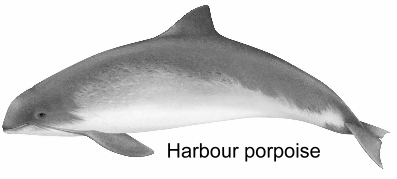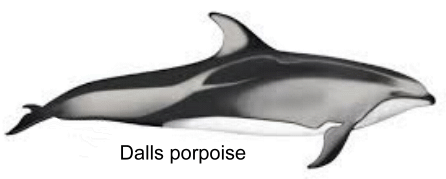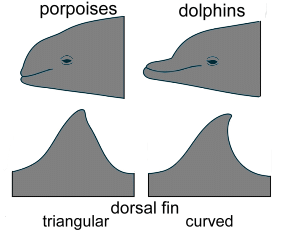 The porpoise family contains seven porpoise species:
 
Porpoises hunt fast-moving fish, squid, and other sea creatures. They have blubber to keep them warm, a single blowhole, and most have a dorsal fin and camouflage that is darker on their back than their belly.  The main physical differences between porpoises and dolphins are their size. Porpoises are generally smaller than dolphins, on average less than Porpoises are less social than dolphins. They live in small social groups and are thought to have simpler social lives than dolphins. Compared to many dolphins, porpoises grow quickly, breed at an earlier age, and do not live beyond 20 years. For example many female harbour porpoises start breeding before they are three years old, while bottlenose dolphins at the same age are still staying close to, and learning from, their mothers. Porpoises are shy; with the exception of the Dall's porpoise, they don't approach boats to bow ride and donít jump clear of the water. |